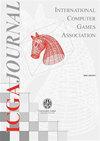国际象棋公开赛
IF 0.2
4区 计算机科学
Q4 COMPUTER SCIENCE, SOFTWARE ENGINEERING
引用次数: 0
摘要
在潘普洛纳举行的第17届WCCC之前的最后几个月,人们对硬件进行了广泛的讨论。讨论起源于RYBKA在北京第16届WCCC上使用的40核。由于大多数程序员负担不起如此强大的计算机能力,ICGA认为这是一种不公平的优势。在主锦标赛中,最多允许使用8个核心(见Richard Pijl在本期的报告)。为了满足那些支持无限硬件的人,第14届比赛安排了第二场比赛本文章由计算机程序翻译,如有差异,请以英文原文为准。
The Open Chess Tournament
The last months before the 17 th WCCC in Pamplona, there was extensive discussion about the hardware. The discussion originated from the use of 40 cores by RYBKA in Beijing at the 16 th WCCC. Since most programmers cannot afford such enormous computer power, the ICGA considered it an unfair advantage. A maximum of 8 cores was allowed in the main tournament (see the report by Richard Pijl in this issue). To satisfy people in favour of unlimited hardware, a second tournament was scheduled as part of the 14 th
求助全文
通过发布文献求助,成功后即可免费获取论文全文。
去求助
来源期刊

Icga Journal
工程技术-计算机:软件工程
自引率
25.00%
发文量
16
期刊介绍:
The ICGA Journal provides an international forum for computer games researchers presenting new results on ongoing work. The editors invite contributors to submit papers on all aspects of research related to computers and games. Relevant topics include, but are not limited to:
(1) the current state of game-playing programs for classic and modern board and card games
(2) the current state of virtual, casual and video games
(3) new theoretical developments in game-related research, and
(4) general scientific contributions produced by the study of games.
Also welcome is research on topics such as:
(5) social aspects of computer games
(6) cognitive research of how humans play games
(7) capture and analysis of game data, and
(8) issues related to networked games are invited to submit their contributions.
 求助内容:
求助内容: 应助结果提醒方式:
应助结果提醒方式:


